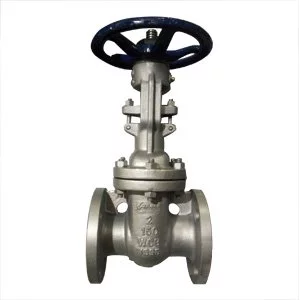Nine types of valves - working principles, pros and cons (part one)
Posted: 11/01/2018 16:01:29 Hits: 341
Gate Valve
It is a valve that vertically moves along the axis of tunnel, and is used for on/off control of the flow of medium rather than moderating flow rate. Gate valves are able to withstand high or low temperature or pressure and convey a wide range of media, but not including mud type media generally.
Advantages:
• Small flow resistance force
• Small torque required for on/off control
• The direction of flow is not restricted - gate valves can be used in a bidirectional loop network.
• The impact of erosion caused by media is less than that of globe valves when gate valves are fully open.
• Simple structure, good manufacturability
• Short structural length
Disadvantages:
• Relatively large installation space - big external dimension, long open length required
• High-frequency rubbing during opening and closing; Scrapes may occur in high-temperature conditions.
• Generally, gate valves have two sealing surfaces, which bring a little more difficulty to machining, grinding and maintenance.
• Long on/off time
Butterfly Valve
Butterfly valves are a kind of valves that block off or moderate the flow of medium by quarter-turning (the disc is rotated a quarter turn).
Advantages:
• Simple structure, volume, lightweight, low material consumption
• Quick shut-off, small flow resistance
• Being able to be used in controlling the flow of media with suspended solid, or, according to the solidity of the sealing surface, powdery or granular media. Butterfly valves are suitable for blocking off and moderating flow (bi-direction) in ventilating and dedusting pipeline, as well as gas pipe, waterway in metallurgy industry, light industrial field, power plant, petrochemical system.
Disadvantages:
• Small scope of flow moderating - 95% of flow won't be blocked off even the valve is only open 30%.
• Being unable to withstand pipeline system with high temperature and pressure due to the restriction of its structure and sealing surface materials (temperature ≤ 300℃, pressure ≤ PN40)
• Poor sealability compared with ball valves, globe valves (So it can only be installed on places where require low sealabilty.)
Globe Valve
It is a valve whose disc moves along the center line of valve body. According to this kind of movement mode, the variation of the opening of valve body is proportional to disc travel. Besides, the fact that the valve stem of globe valve has a relatively short travel of opening and closing, its reliable blocking-off function, these three factors are why globe valves are a suitable option for flow moderating, blocking off, and throttling.
Advantages:
• Wear resistance - small friction compared with gate valves during the processes of opening and closing
• Short open length (a quarter of the channel within the valve body)
• Only one sealing surface, good manufacturability, easy maintenance
• High-temperature resistance - Globe valves' packing materials are normally asbestos and graphite.
Disadvantages:
• Because globe valves will change the flow direction of medium, their minimum flow resistance is higher than that of most other valves.
• Slow opening speed
Reducing Valve
Reducing valves are used for reducing the upstream pressure to the required downstream pressure and stabilizing the downstream pressure by consuming the energy of medium.

